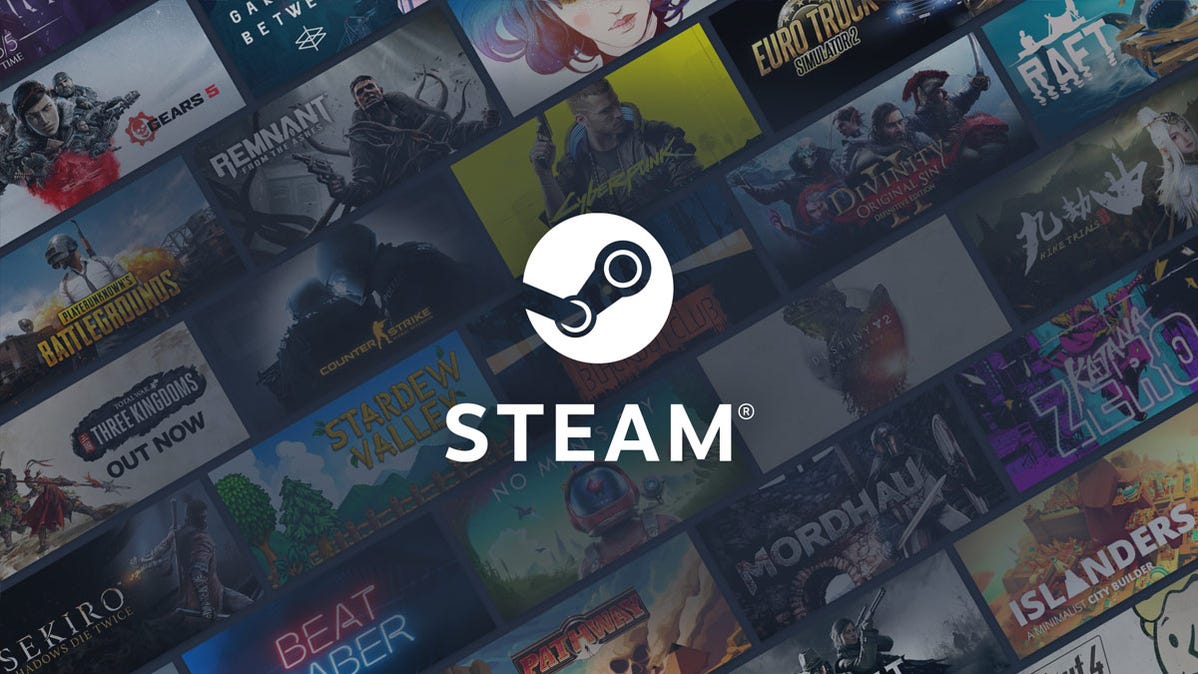
Steam is the most popular store and multiplayer platform for PC games, and it’s packed with features to make your gaming experience better. Here are ten Steam features you should be using that you might not have noticed.
Use the Storage Manager
It can be difficult to tell which games are taking up the most storage in your library, which is why Steam has a somewhat-hidden Storage Manager feature. You can open it by navigating to your Steam settings, then Downloads > Steam Library Folders.
Storage Manager lists all your installed games and their total size, along with a graph at the top showing how much space remains on your drives. Steam even breaks down the size of games between the base title and any downloadable content (DLCs). There are checkboxes on each game for uninstalling them or moving them to another library folder.
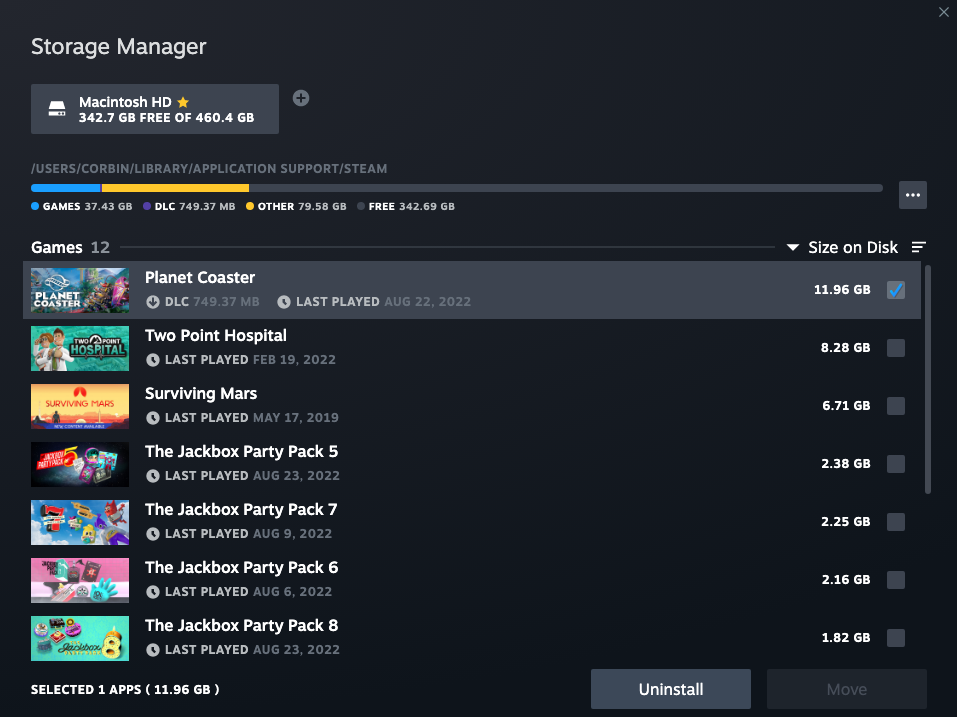
The one catch is that Steam can’t track all files created by installed games, especially if they save some data outside Steam’s library folder. Many games on Windows save files in the “My Games” folder in the Documents directory, which Steam can’t easily track. For example, Fallout 76 saves screenshots and configuration files to that location instead of Steam.
Try Some Beta Updates
Some Steam games have beta update programs, which you can opt into to try new features and changes before they are fully ready. Right-click on any game in your library, then go to Properties > Betas. If there is a beta program available, it will be listed in the dropdown menu.
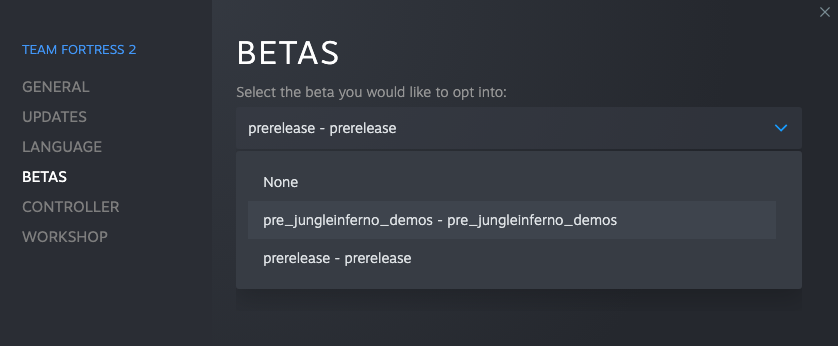
Most games don’t have beta programs available, but they can be handy when game publishers offer them. For example, Yakuza 0 rolled out graphical fixes in a beta update before a wide release, and Persona 4 Golden has also released betas for the same purpose.
Sell Your Trading Cards for Free Money
Steam periodically gives you trading cards for a game you’re playing (if the game has them), which can be collected to create badges for your Steam profile. If you don’t care about sprucing up your Steam account page for others, you can sell them on the Steam Marketplace — each one is usually worth at least a few cents.
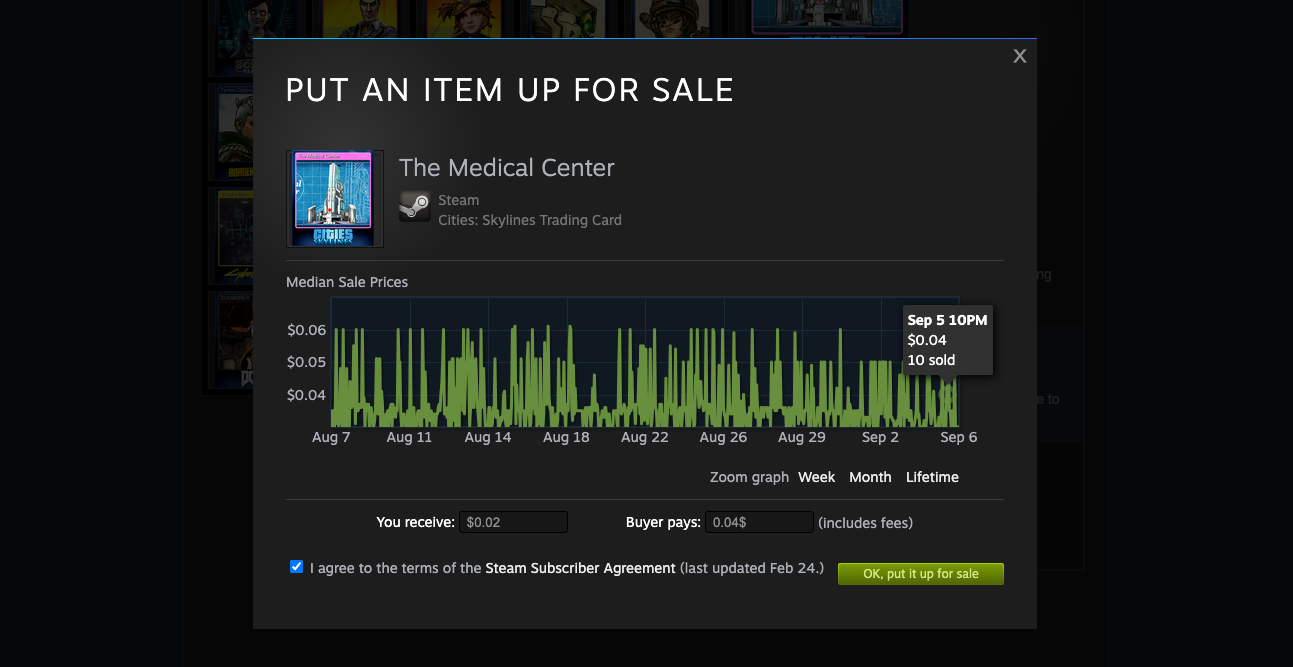
You can see all of your trading cards by hovering over your name in Steam’s top bar, then clicking Inventory in the pop-up menu. Clicking a card will reveal the current starting price in the Community Market. If you want it to sell quickly, look at the graph of recent sales, put the recent price into the “Buyer pays” text field, and click “Put it up for sale.” Cards from some games are worth more than others.
Add Games to Your Wishlist
You might already know that Steam has a Wishlist feature, which contains games you saved for purchasing (or looking at) later. It’s more than just a simple list, though. If you add an unreleased game to your Wishlist, Steam will send you a notification (and an email) when the game is available to purchase. Steam will also notify you in the same way if a game on your Wishlist ever goes on sale.
Finally, depending on your profile privacy setting, your Steam friends can see games on your Wishlist. That makes gift-giving for birthdays, holidays, or other special occasions much easier — assuming your Steam friends coordinate the gifts, anyway. You can check your Wishlist by hovering over the big “Store” link in the top bar, and clicking “Wishlist” in the drop-down menu.
Check for Linux (And Steam Deck) Compatibility
Steam is available on Linux operating systems, which includes the SteamOS platform that powers the Steam Deck console. If you’re planning to pick up a Steam Deck at some point, or want to see what games you might lose if you replace Windows on your PC with Linux, there are a few places to check.
First, the store page for each Steam game has some information. The list of supported platforms is right next to the “Add to cart” or “Play Now” button, represented with icons. The Windows and Mac icons are straightforward, but the icon for Linux support is just the Steam logo. It used to be Tux, the mascot of Linux, but the icon was changed in 2015. You can also scroll down to the System Requirements section on the store page to see the specific requirements for Linux and SteamOS.

However, the Steam icon only appears if the game developer has a fully-supported native Linux version available. Many popular games can only run on Linux using Proton, Valve’s fork of the Wine compatibility layer that is built into Steam.
To find out if a game works specifically on the Steam Deck, you can browse all games verified by Valve using a filtered Steam search. Some of those games run natively, and some use the Proton layer, but all games that are verified will be fully playable. There’s also a “Steam Deck Compatibility” box on the right side of each game’s store page, if you scroll down a bit.
If you want to know about game compatibility on desktop Linux, you’re best off with the third-party ProtonDB database. It assigns a ranking to each game based on reports from Linux players, and many of the comments include troubleshooting steps and other advice. ProtonDB also includes comments from Steam Deck players, so it’s worth checking out even if a game is marked as Deck-verified on Steam.
Check Someone’s Name History
You can change your Steam name anytime you want, which means you might eventually run into the problem where you don’t recognize someone in your Friends List. Thankfully, it’s easy to check the previous names used by someone on Steam.
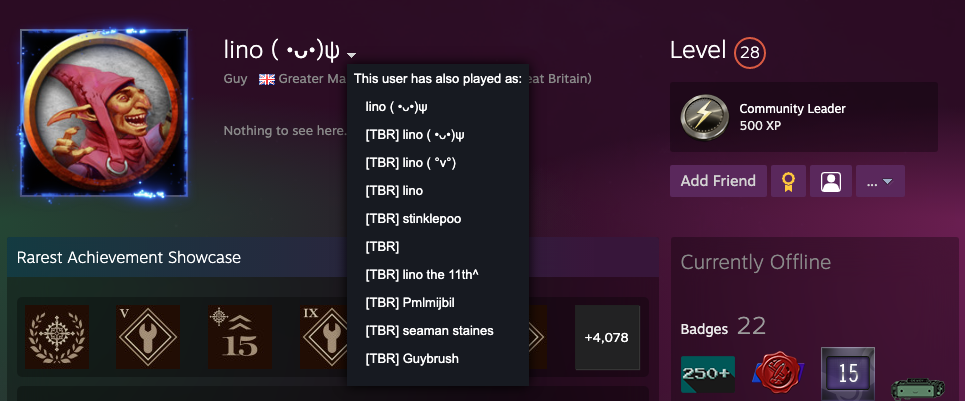
From your Friends List, click the down arrow on someone, and click “View Profile.” Then click the down arrow next to their name on their profile. It won’t show all the names someone has used in the past, but it will display the most recent names.
Give Your Friends Nicknames
Another solution for not recognizing people in your Friends List is to manually assign nicknames. The other person won’t see any nicknames you have given them, they’re only for your reference — like creating a contact card for email or texting.
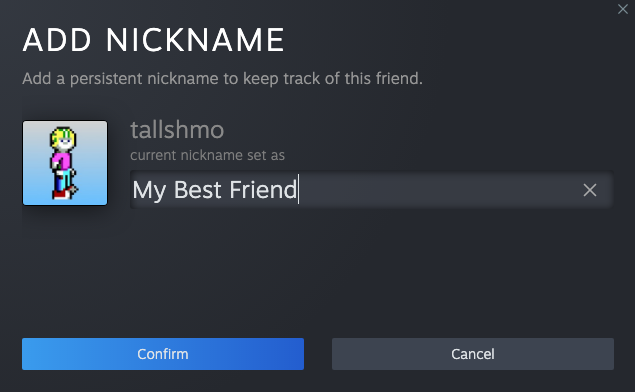
It’s easy to set a nickname, but it does require a few clicks. Open the Friends List, hover over someone in the list, click the down arrow, then navigate to Manage > Change Nickname.
Skip the Store on Startup
When Steam starts up, it will open the Store page first — probably because Steam would like you to buy more games. Thankfully, there’s a setting to open other pages by default. Just go to the Steam settings and click the Interface tab.
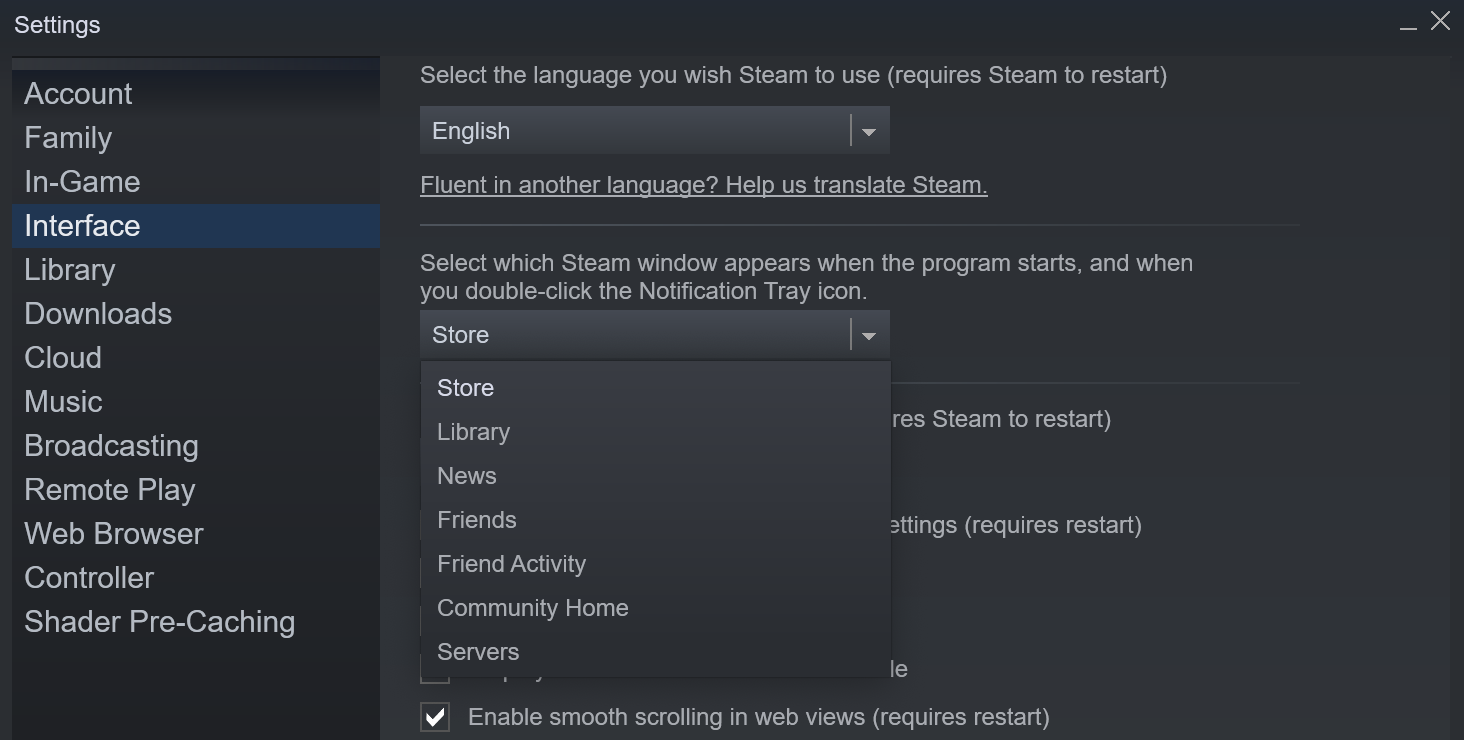
You can choose between the Store, Library, News (which shows updates for your games), Friends, Friend Activity, Community Home, and Servers. Changing it to Library gives you quicker access to all your games, if you don’t already open them from your computer’s application list.
Check Price History for a Game
Even though sales on Steam are a common sight, major discounts might lead you to believe some offers are a once-in-a-lifetime opportunity. Thankfully, there’s an easy way to check if a sale price is a great deal, or if it’s the same 60% discount that appears every few months.
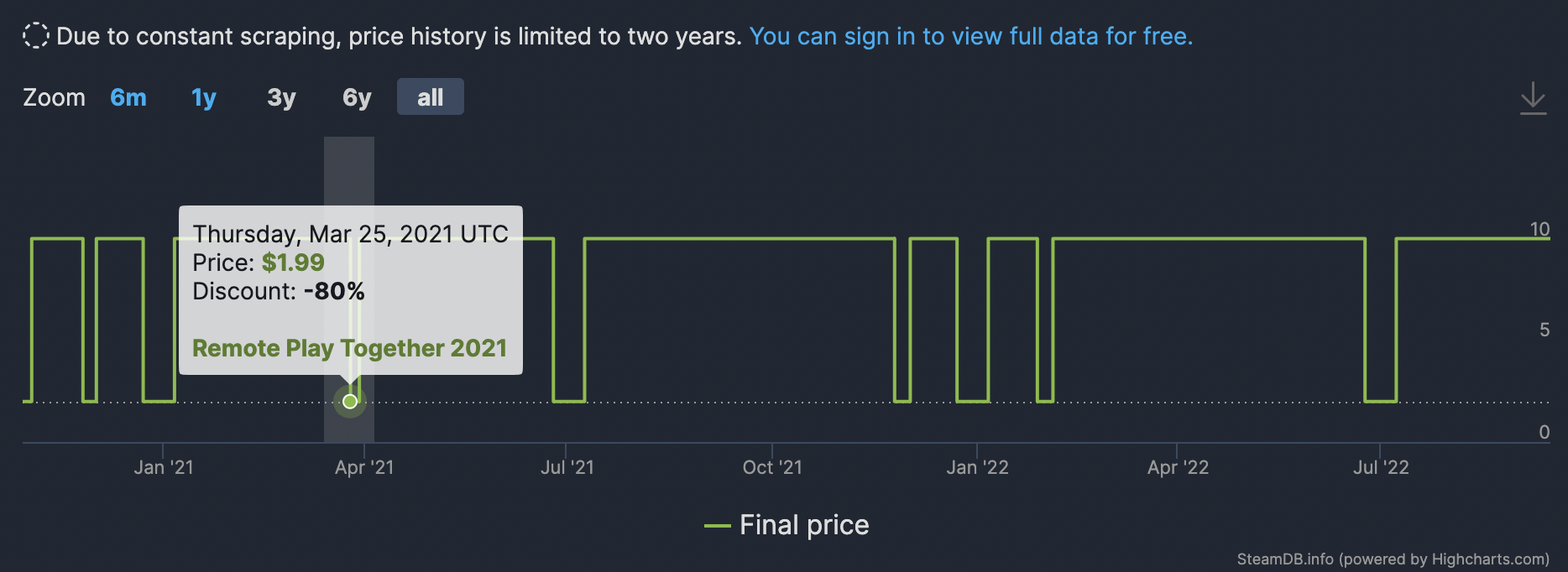
This technically isn’t a Steam feature, but searching for a game on the third-party SteamDB site will show you a price history in all regions. Many games drop to the same discount during each of Steam’s site-wide sales, like Portal 2 in the above screenshot, but SteamDB can give you a better idea of what to expect from future discounts.
Install Many Games at Once
After you install Steam for the first time on a new computer, you’ll probably want to start downloading many of your games. The good news is that you don’t have to click on each individual game to start the download.
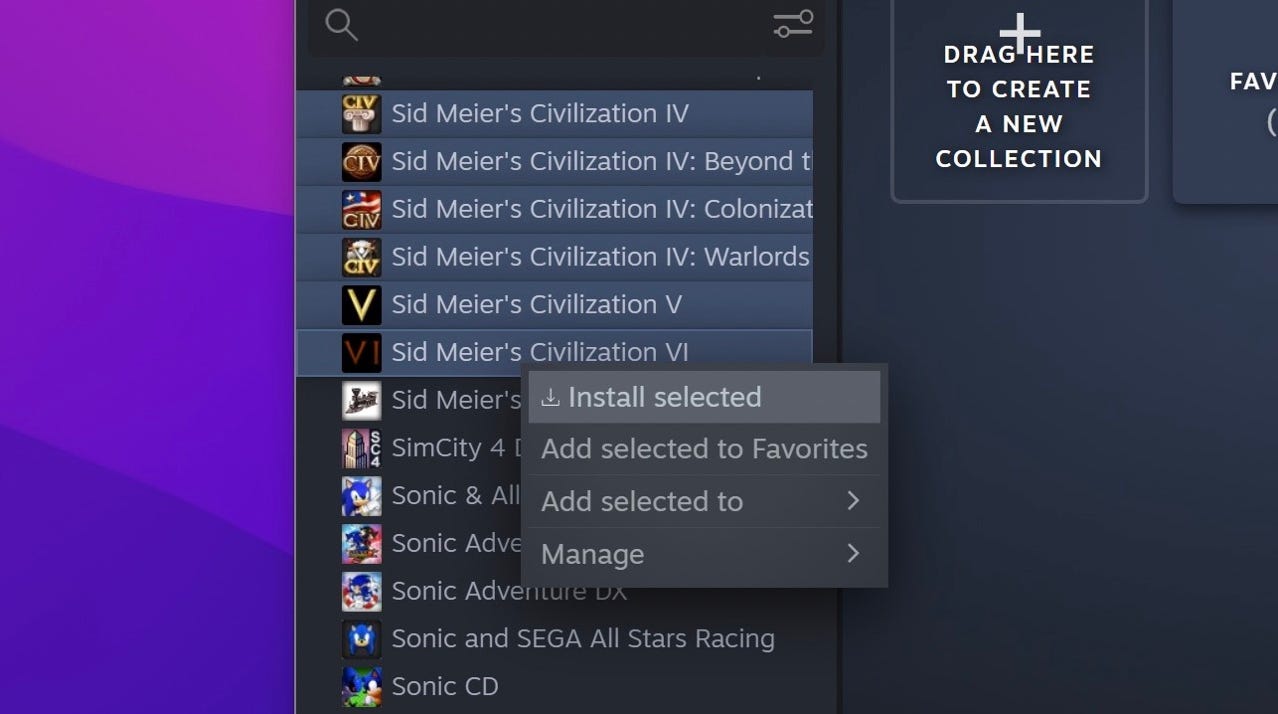
Steam has an option to queue up multiple games for download at the same time. You can shift-click on your library list to select multiple games (click one game, then click another lower down the list while holding Shift), or you can select them out of order by holding down Control while clicking. Once you have the games you want selected, right-click on any of them and select “Install Selected.”
